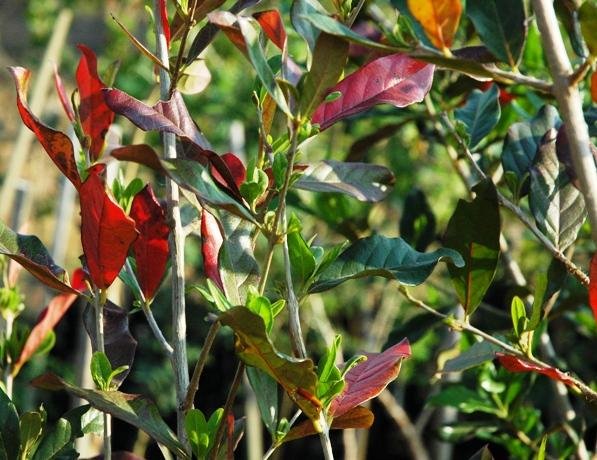Combretum kraussii, some wintry red leaves

Author: Ivan Lätti
Photographer: Johan Wentzel
Combretum kraussii, the forest bushwillow, grows in evergreen forests and along forest margins from sea-level to about 1 200 m, usually on rocky slopes (SA Tree List No. 540). This tree is mostly evergreen and may reach 15 m in height with a trunk of 80 cm in diameter at breast height.
The leaves grow on lateral branchlets. They are usually opposite, but may be alternate on coppice shoots growing from the root collar, or even whorled, all on the same tree. The leaf shape is elliptic or obovate-elliptic. Leaves have four to twelve pairs of lateral veins. Veining is flush to slightly recessed above, raised below.
Smaller white or blanched leaves grow around the flowers, falling and being replaced by bigger green ones when the flowers are gone. The white ones are said to serve pollination needs by indicating the flowers to pollinators on the generally green forest canopy at bloom time. The leaf blanching varies in intensity and some leaves may also lose it and not fall after the flowering. Some of the leaves turn bright red, mostly in winter.
Flowers are creamy white in dense, axillary heads above the specialised white leaves. Fruits are four-winged and yellowish, the wings a dark red colour (Coates Palgrave, 2002; Carr, 1988; Schmidt, et al, 2002).

